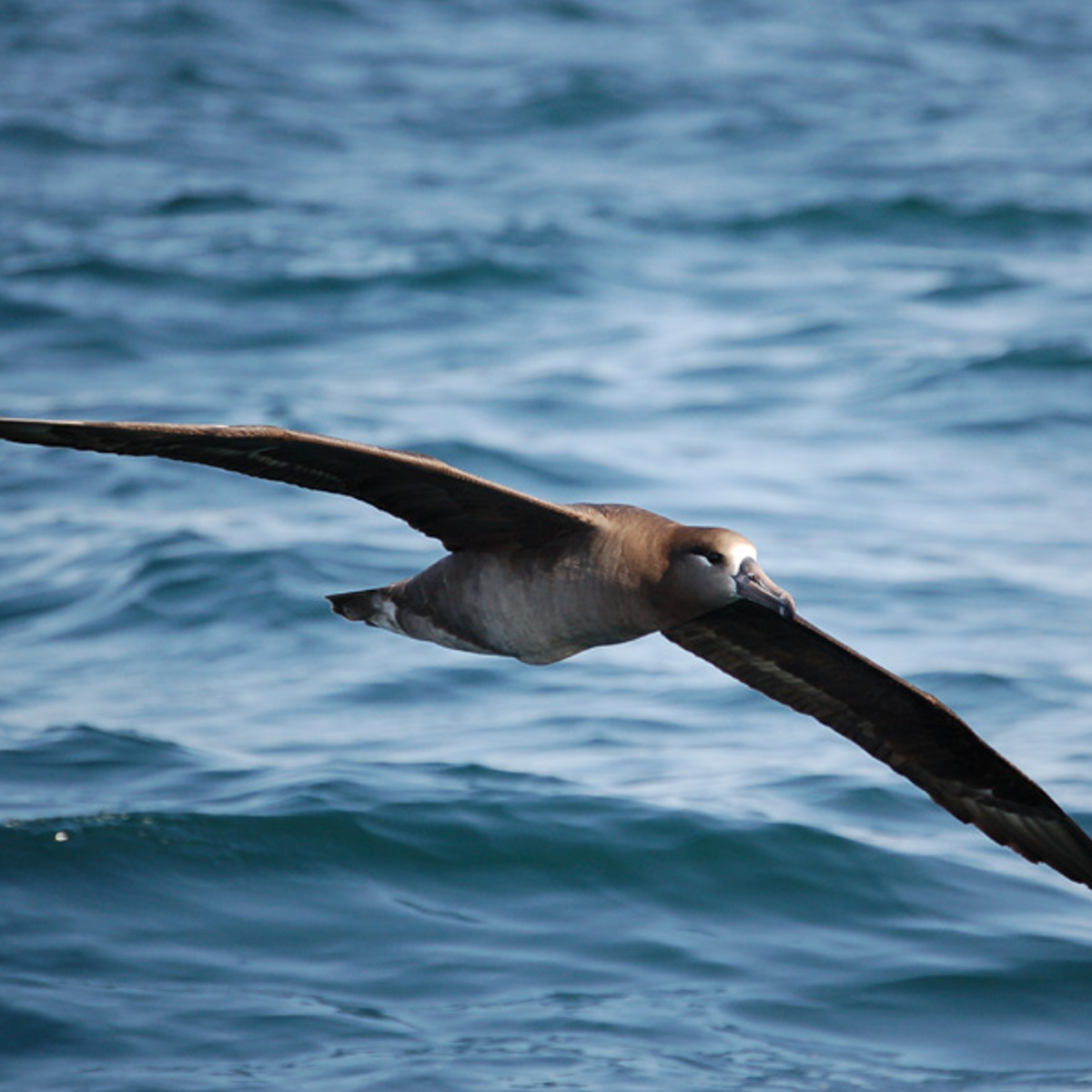Bird of the Month: Black-footed Albatross
Written by Andy McCormick
Andy McCormick, Volunteer and Former Board President of Eastside Audubon
And a good south wind sprung up behind;
The Albatross did follow,
And every day, for food or play,
Came to the mariner's hollo!¹
The Black-footed Albatross is the only albatross commonly seen from the North American coastline and we have the good fortune of having it off the Washington coast in July and August. The birds are found across the North Pacific in the non-breeding time of year. They are of the genus Phoebastria from the Greek for prophet in reference to the bird’s significance as an omen for sailors. The species nigripes, black-footed is from the Latin niger, black and pes, foot.
Black-footed Albatross
Scientific Name: Phoebastria nigripes
Length: 32”
Wingspan: 84” (7 ft)
Weight: 7 lb (3,200 g)
AOU Alpha Code: BFAL
The Black-footed is dark brown overall with white on the face around the base of the bill. The bill, as in all albatrosses, is sharply hooked and is used for fishing as they dip into the water while arcing and gliding on their long, narrow wings. Their excellent sense of smell leads them to squid, fish, and crustaceans. In Hawaii they eat the eggs of flying fish. Black-foots do better in windy weather as it helps them stay aloft. Their bodies are large and in low winds they are forced to laborious flying. In calm weather they usually sit on the water.
HAWAIIAN ISLAND NESTER
The vast majority of these birds (95%) nest in the northwestern Hawaiian Islands. The rest of them breed in Japan. They lay a single creamy white egg in the sand. Both parents, who mate for life, incubate the egg for over two months. In another five months the young are ready to leave the island. The entire breeding cycle takes over a year, so they nest only once every two years at the most (Kaufman). Black-foots can live to 40 or 50 years of age and do not begin breeding until their fifth year. Because of this long-life cycle, it is difficult for them to recover from losses.
STATUS AND CONSERVATION MANAGEMENT
Black-footed Albatrosses are now considered threatened. They have had population declines of about 20% since 1995. It is estimated that 8,000-19,000 Black-foots are killed each year when they take bait on longlines and become entrapped and drown. In 1992, drift net fishing was banned reducing this additional threat to Black-foots. The birds also ingest plastics floating on the water. Because they feed their young regurgitated food the chicks ingest some plastic particles (Sullivan). In research studies, adults have been found to have high levels of mercury, arsenic and organochlorine chemicals.
The Ancient Mariner saw the albatross as a good omen, but then killed it. The crew’s punishment of hanging the albatross around the mariner’s neck did not end the troubles. It was only when the mariner understood that all creatures share the earth, did he find peace.
Farewell, farewell ! but this I tell
To thee, thou Wedding-Guest!
He prayeth well, who loveth well
Both man and bird and beast.
He prayeth best, who loveth best
All things both great and small;
For the dear God who loveth us,
He made and loveth all.¹
Photo credit Robin Gwen Agarwal (banner) and Ryan Merrill.
¹Samuel Taylor Coleridge, The Rime of the Ancient Mariner
References available upon request from amccormick@eastsideaudubon.org.



